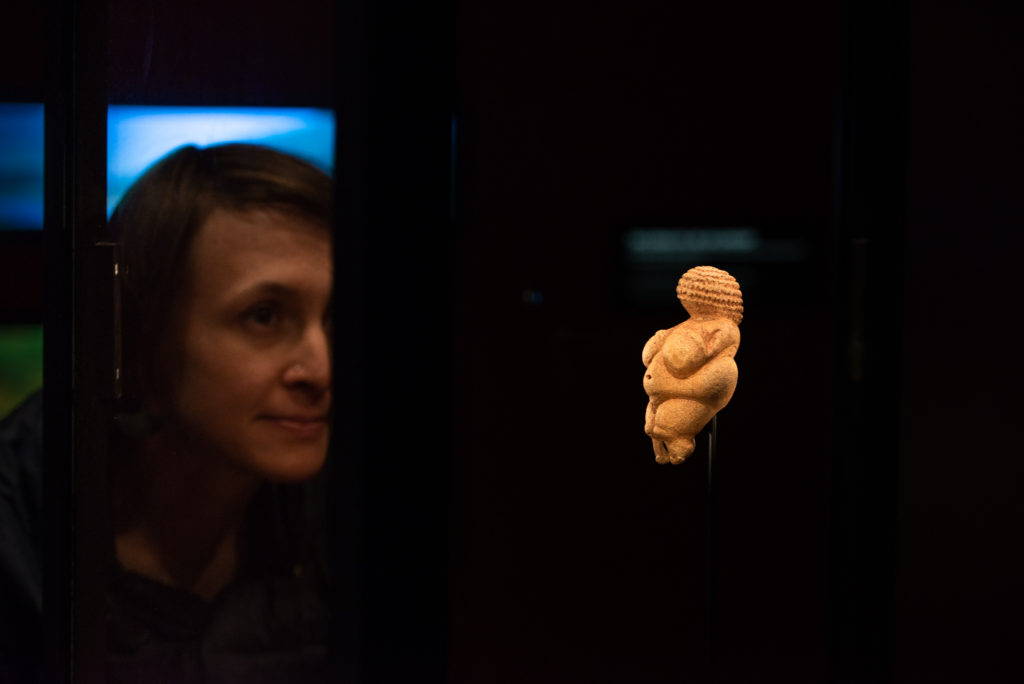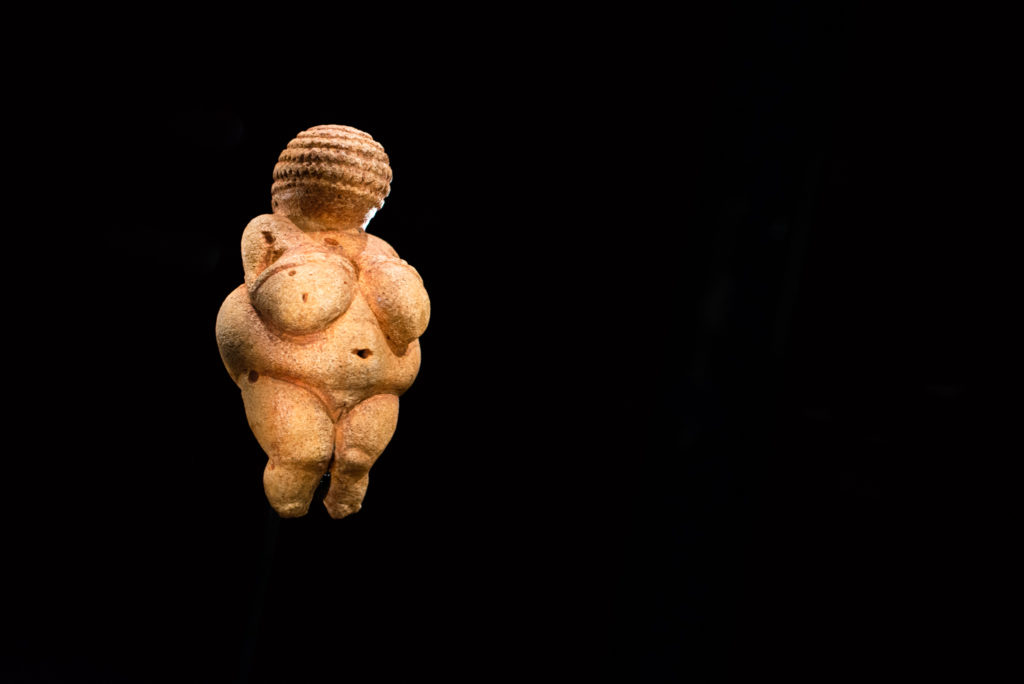
In 1908, during archeological excavations close to the sleepy village of Willendorf, then part of the Austro-Hungarian Empire, a tiny limestone figure depicting a voluptuous woman was found. The archeologists immediately recognized the value of the find, put it in a wooden box and delivered it personally at the imperial-royal Museum of Natural History in Vienna. The figurine became an archeological, historical and art sensation: the later dubbed “Venus Of Willendorf” turned out to be some incredible 29,500 years old. Hopes were high that the figurine would shed light on Stone Age and the beginning of human society. Yet, more than hundred years later the little woman remains a mystery. In her silence however she tells us more about us – and human nature.
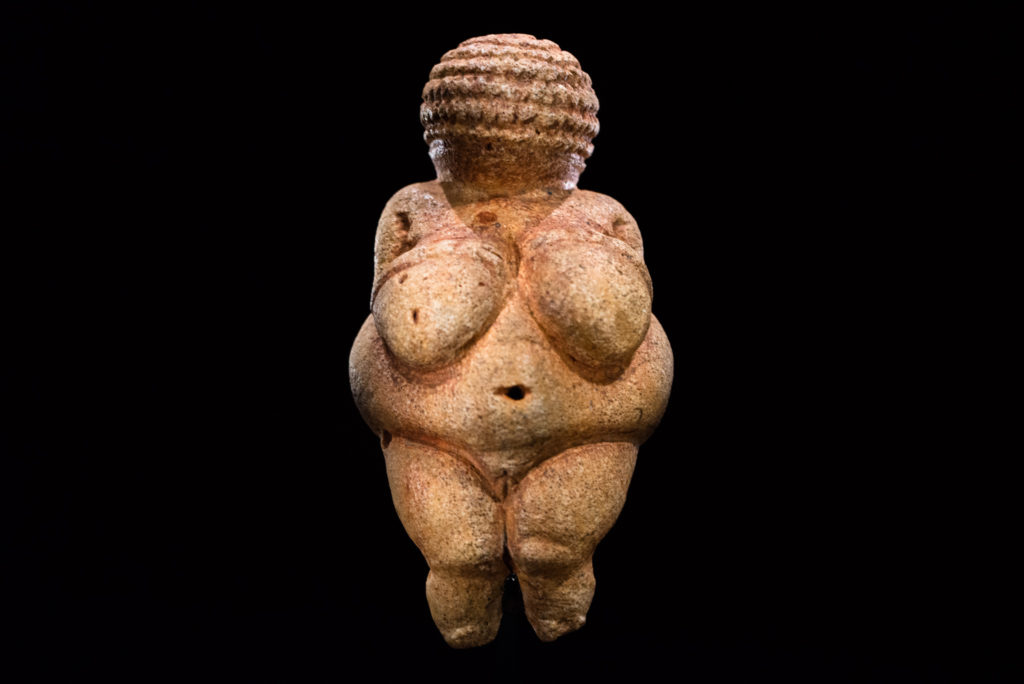
The origins of the Venus remain unknown. The limestone she is carved out is not local, and the ochre she supposedly was painted with has long faded. She has no face, but an elaborate hairdo of seven concentric circles. She measures 11,5cm from the tip of her head to her ankles. The little woman has no feet, and never had. What she has instead is big buttocks, burly breasts, a billowing belly, and a prominent cleft between her thighs. She is without doubt a symbol of fertility. Fitting snugly in one hand, she was maybe a lucky charm, meant to be carried around.
But then again, if she was of a nomadic tribe, part of a group of hunters and gatherers, why was she obese, her arms thin and unfit to pick berries or dig for roots, and no feet to run from or after big animals? And if she was a token of procreation, why was she an older woman, instead of a young one at the pinnacle of fertility?
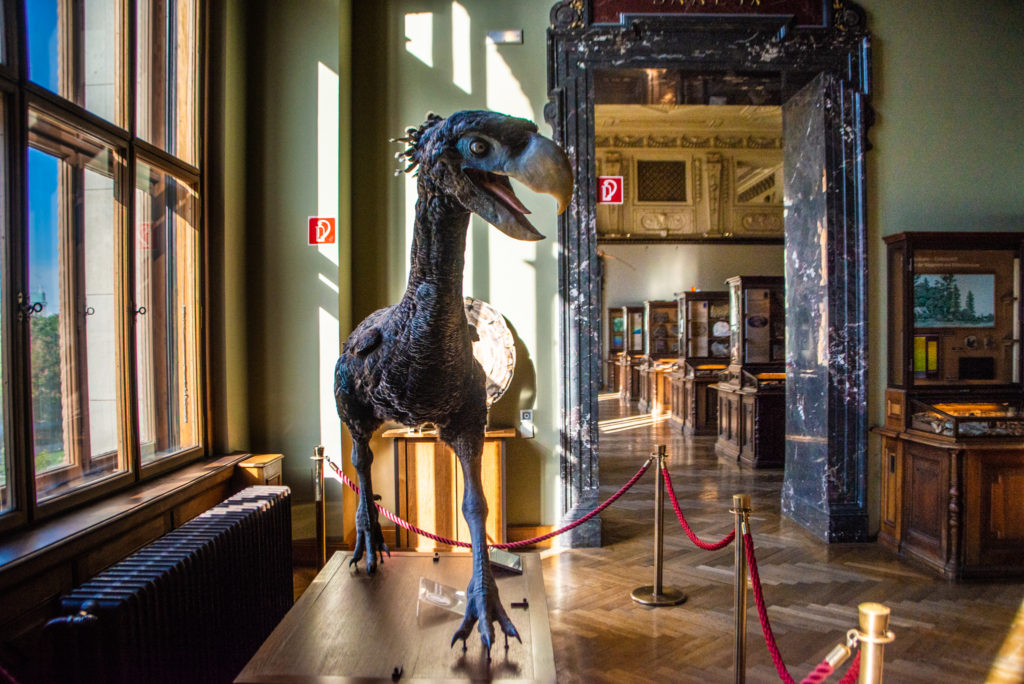
The Venus of Willendorf most likely was no lucky charm, but a totem of womanhood, the epitome of femininity, the antithetical man. Some researchers suspect the figure to be the self portrait of a female artist – her exaggerated proportions the foreshortening effect of self-inspection, her facelessness the result of the lack of mirrors. Others argue that the figurine does not depict a human woman at all, but a deity, a kind of Mother Earth. The Venus is maybe another proof that early societies were in fact matriarchies.
Whatever the truth behind the little figurine, the Willendorf woman was not the only, nor the oldest figurine found in the region in the 20th century. But she was and still is the most prominent. Something about her seems to resonate with (not only) Austrian culture. She is among the most popular archeological objects in the world – and definitely the prime attraction of the Museum Of National History in Vienna.
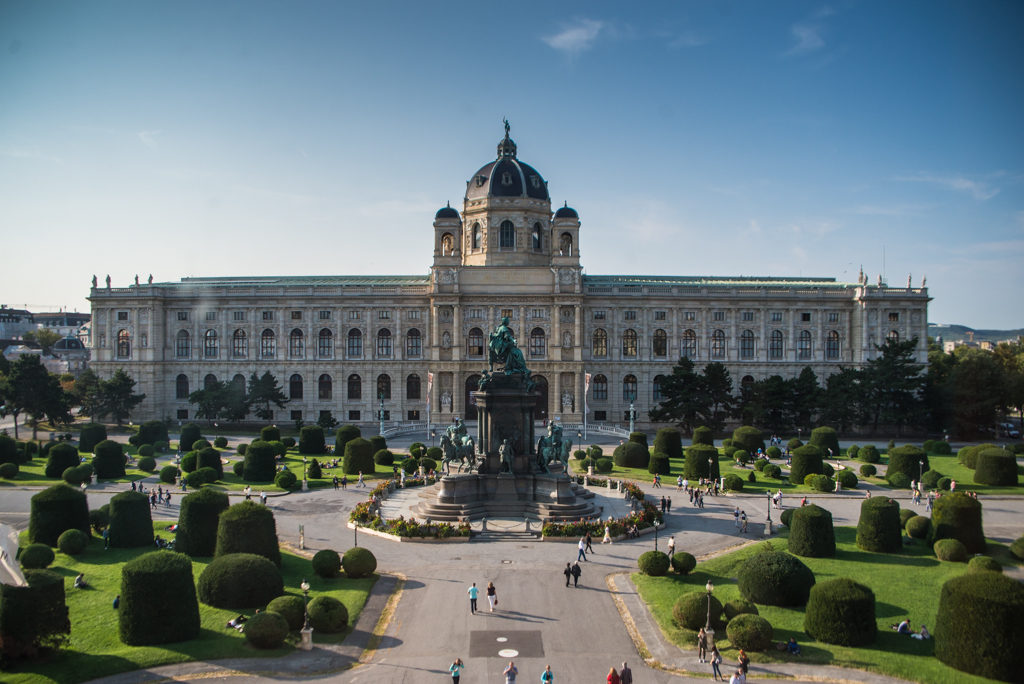
The Natural History Museum in Vienna dates back to 1750, when emperor Franz Stephan purchased the then largest collection of natural history objects from Chevalier de Baillou in Florence. This collection, assembled by noblemen and royals, comprised 30,000 fossils, snails, mussels, minerals and precious stones and made its way from Italy over the Alps by means of a mule caravan. The emperor was quite taken with his purchase. He visited the collection every day and furthermore financed expeditions around the world to ship home even more rare specimen of live animals, plants and stones.
Emperor Franz Stephan had enough time to indulge in his passion. It was up to his wife, Maria Theresia of Austria, to run the empire – and the family. The couple had sixteen children. Yet, it was exactly her being a supermom that turned her into a successful leader and business women. Despite her being a strict, authoritarian leader inspired by catholic fundamentalism, to the people of the empire she appeared gentle and big-hearted. Despite never having been crowned emporess, that’s what the people called her. Emporess Maria Theresia. She was their mother, a mother to nine nations. A mother of 50 million.
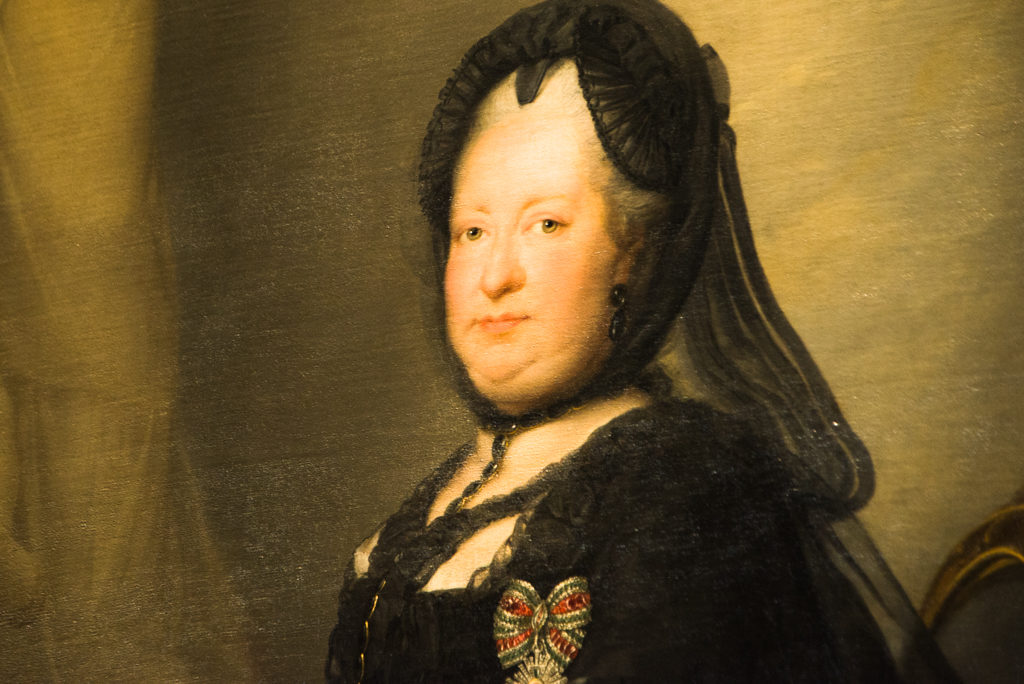
Maria Theresia herself had no interest in natural history, but she recognized the importance of her husband’s collection when it came to mineralogy and the importance it possibly held for mining and exploiting raw materials from the soil. When Franz Stephan died, she donated the collection to the public. She hired a curator to create a museum (open by individual admission only, mind you) at her Imperial palace.
In the following 100 years, the collection kept growing and finally, under her great-great-grandson Emperor Franz Josef I, a new building had to be erected. The new Museum of Natural History, opened in 1889, is situated at Vienna’s pompous Ringstraße, facing its almost identical twin, the Museum of Fine Arts. In between the two imposing buildings, Maria Theresa sits enthroned as a bronze statue. A mere twenty years after the opening of the two museums, by 1918, the monarchy was history itself, but the two museums and Maria Theresia are still standing tall. As is the Venus of Willendorf.
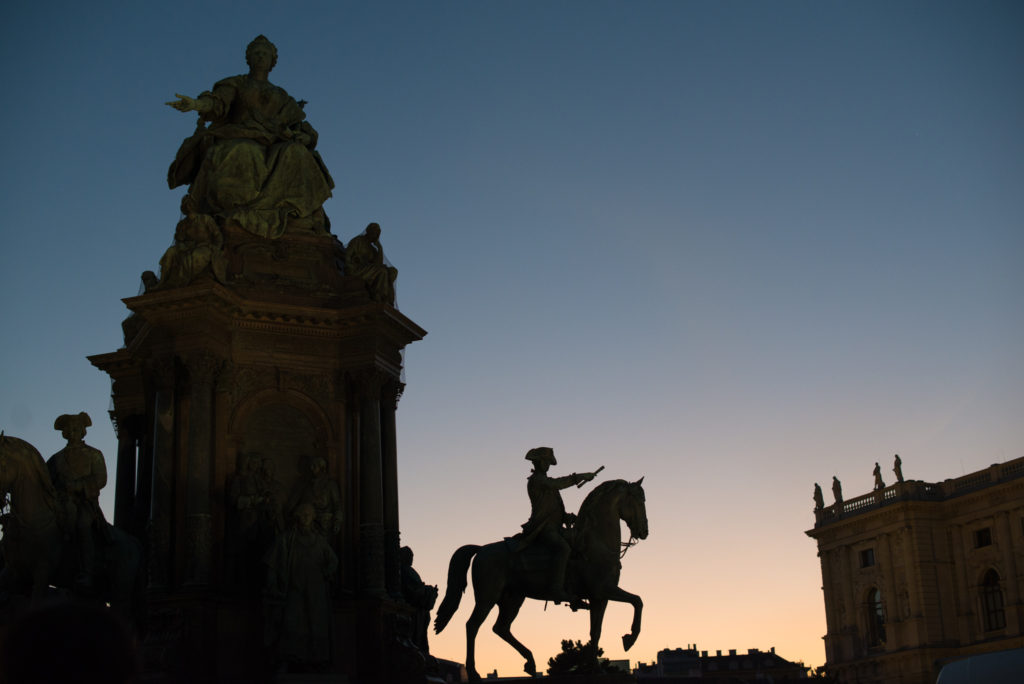
After 29,500 years hidden in the soil, the Venus of Willendorf was condemned to her little wood box until 1989, when she was finally presented to the public. She now resides in her own little chamber on the second floor of the Museum, from where, through the windows, the visitor also has a good view of Maria Theresia, Emporess.
